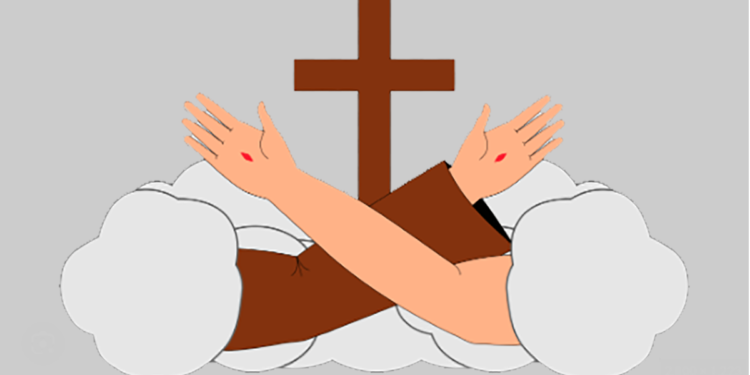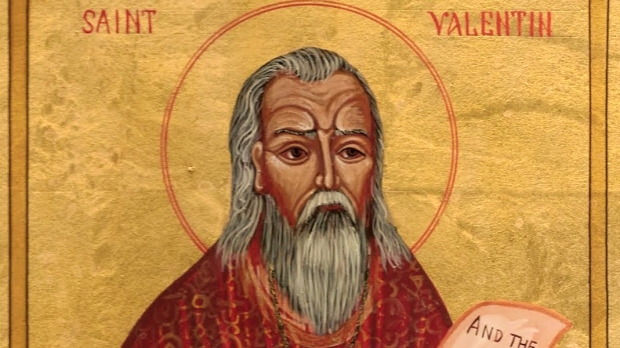PEOPLE WHO BLEED AND SUFFER:

The riddle of the stigmatics
Some deeply devout Catholics bleed and suffer when their bodies develop wounds and scars in locations corresponding to those of the crucifixion of Jesus Christ: the hands, wrists and feet. Why do they suffer intensely the way He suffered during His Passion? Are we to turn to medical science for a rational answer or leave this phenomenon to be explained best by Christian mysticism: becoming one with God or the Supreme Being?
Gemma Umberta Maria Galgani (1878-1903) was an Italian mystic from the Central Italian city of Lucca, who passionately wanted to become a nun, but nature did not allow her to wear the white clothes, as she suffered from spinal tuberculosis and died at the age of 25. Shortly after turning 19, Galgani was orphaned. Declining two marriage proposals, she became a domestic helper. The girl began to display signs of the stigmata (meaning ‘marks’ or ‘spots’ in Greek) in 1899 when she was 21. Her testimonies confirmed that she sometimes received special messages about current or future events from her guardian angel, Jesus, Virgin Mary and other saints. Galgani was frequently found in a state of ecstasy and on one occasion, she is also reputed to have levitated, finding herself raised from the floor while she was kissing the wound of the crucifix in her dining room. Opinions of her, however, were divided: some admired her extraordinary virtues, calling her “The Virgin of Lucca”, but others, even her younger sister Angelina, used to mock her stigmatic experiences. The physician Pietro Pfanner, who had known Galgani since her childhood, and psychologist Donovan Rawcliffe (in a book published nearly 50 years after her death), suspected that her stigmata may have been caused by “self-inflicted wounds of a neurotic or hysteric”. On another occasion, Galgani’s foster mother Cecilia had reportedly observed a sewing needle on the floor next to her. Despite this natural tendency of scepticism among orthodox scholars about any hitherto unexplained phenomena, she is venerated in the Catholic Church since 1940 as the “Daughter of the Passion” and the patron saint of students, pharmacists, paratroopers and parachutists, patients of back pain, headaches/migraines, victims of temptations, etc.
Therese Neumann (1898-1962) was a poor German Catholic from the village of Konnersreuth in Bavaria, who suffered from an incurable illness. A wound appeared slightly above her heart in 1926 on the first Friday of Lent and she continued to be stigmatised till her death. It was claimed that during some of her Friday trances, she would utter phrases identified by witnesses as ancient Aramaic which Jesus spoke. She lost weight tremendously and to the astonishment of the various physicians who examined her, Neumann stopped passing excreta and her intestines decayed, yet she lived long. Neumann is said to have consumed no food from 1923 until her death in 1962 other than the Holy Eucharist, instituted by Jesus at the Last Supper before his arrest, trial and execution. Augustus Montague Summers (1880-1948), an English author and clergyman, in his book The Physical Phenomena of Mysticism, speaks of her supposedly supernatural ability to survive for long periods without food or water. But, Ian Wilson (born in 1941), British author of history and religion, doubted her claims of inedia: the claimed ability of a person to live without food, and in some cases, water. Similar to the case of Galgani, physician Otto Seidl described Neumann also as hysterical. Rawcliffe said that she was a deliberate fraud aided and abetted by her father. Despite all these assumptions, she has attained a place in popular piety and the Vatican proceedings for her beatification have been formally opened.
Paramahansa Yogananda (1893-1952), Indian Hindu monk and yogi, visited Neumann and in his book Autobiography of a Yogi (1946), he devoted an entire chapter, Therese Neumann, The Catholic Stigmatist of Bavaria, which reverently gives a first-hand description of one of her Friday Passion trances.
Stigmatics are not known prior to the 13th century. The earliest reported stigmatic case occurred in 1224. In that year, Francis of Assisi (1181-1226), Italian mystic and Catholic friar (canonised in 1228), who founded the religious order of the Franciscans, was stigmatised while in a spiritual retreat on Mount Alverno in the Italian Apennines. Padre Pio Forgione (1887-1968), another Italian mystic and Catholic friar (canonised in 2002), is one of the most respected and venerated stigmatists. He suffered from constant pain in his hands which were pierced through, but never complained and possessed remarkable capacity for endurance. Despite temporary sanctions imposed by the Hole See which conducted several investigations, his reputation increased during his lifetime. St. Pio was said to have been endowed with mystical gifts such as reading souls, ability to bilocate (alleged psychic ability to being in two different locations at the same time) and levitate and effect healings.
Stigmata are foreign to the Eastern Orthodox Church. Probably over 80% of all stigmatics are women. From the 14th to the 20th century, more than 300 persons were identified as having been stigmatised; more than 60 were declared saints or the blessed in the Roman Catholic Church, although in canonisation proceedings stigmata, similar to incorruptibles, are not considered incontestable miracles. In some cases, stigmatics have been given in a vision a mysterious chalice to drink from or others have felt a sharp sword being driven into their chest.
Is it “imagination” that causes stigmata?
According to the Catholic encyclopaedia, some physiologists, both Catholics and Free-thinkers, have proposed the scientific explanation that the wounds might be produced in a purely natural manner by the sole action of the “imagination” imbued with a great love for Jesus, impressed by His sufferings. One cannot unduly belittle this power of imagination in us, since, joined to an emotion, it can produce sweat. Likewise, the very idea of having a piece of candy in the mouth produces abundant saliva. Therefore, the nerves acted upon by the imagination might produce the emission of a liquid and this liquid might be blood. But the nerves adjacent to the skin do not terminate in a gland that emits blood, thus preventing any possibility of the kind of bleeding experienced by stigmatics. There is not a single experimental proof to date that imagination could produce blood, particularly in a violent manner, the encyclopaedia says.
Another scientific reason that has been put forward is that there have been bloody sweats, but Dr. Lefebvre, professor of medicine at the Catholic University of Louvain in Belgium, argues that such cases, examined by physicians, were not due to a religious or moral course, but to a specific malady. Moreover, the microscope has confirmed that this red liquid which oozes forth is not blood and its colour is due to a particular substance. It does not proceed from a wound either, but is due, like sweat, to a dilatation of the pores of the skin.
Can physicians explain these three circumstances?
The encyclopaedia poses three important points:
- Physicians cannot cure these wounds of the stigmatics with remedies.
- Unlike natural wounds, those of the stigmatics do not give forth a foetid odour.
- Sometimes these wounds give forth a pleasant smell.
Another explanation is that the stigmatics produce the wounds either fraudulently or during attacks of somnambulism, unconsciously. But physicians-says the Catholic encyclopaedia-have taken every step to avoid such circumstances and proceeded with great strictness, particularly in modern times. It says that a doctor named Imbert has counted 321 stigmatics in whom there is every reason to believe in a Divine intervention.
Medical science has failed to provide convincingly and conclusively a rational explanation for the cause of stigmata and their subsequent healing. Although many attempts were made to reproduce stigmata by hypnosis, the results were disastrous, as the wounds reddened the skin and sporadic bleeding occurred.
The blood that flows from the wounds of the stigmatics is clean arterial blood without the slightest trace of disease. The wounds at times remain open for long periods, but never get infected. Much to the surprise of medical science, these wounds appear and disappear.
The mystery of the stigmata has eluded all explanations to this day. The controversy about its supernatural or purely neurotic/hysteric origin still continues. The only possible explanation seems to be that there exists some hidden or unknown connection between the unconscious minds of the stigmatics and the crucifixion of Christ. ***







